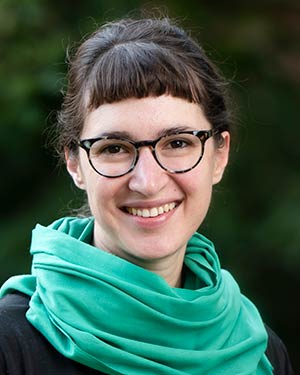 Camila B. Lopez-Anido
Camila B. Lopez-Anido
Assistant Professor of Biology
Reed College
3203 SE Woodstock Blvd.
Portland, OR 97202
Office: B242
Lab: B244
Email: cbla@reed.edu
How are plant cell fates controlled?
I am interested in how plants build tissues in a changing climate. My core research goal is to identify fundamental molecular principles that define flexible cell fate decisions and integrate environmental cues. I leverage strengths of the model plant Arabidopsis, while also exploring wonders of development and physiology across the plant kingdom. To elucidate mechanisms that underlie dynamics of cell collectives, I combine functional genomics, molecular genetics, and cell biology approaches. The leaf epidermis is a particularly ideal system for this work as it presents scorable molecular, cellular, and organ-level phenotypes when developmental processes are altered.
Epidermal lineages and leaf development
The leaf surface offers a beautiful landscape of expansive pavement cells among two-cell pores known as stomata. While pavement cells serve as a protective barrier for inner tissues, stomata are essential to control gas exchange for photosynthesis and transpiration. Many other cell types also provide critical roles and contribute to endless patterns. My research examines how such cell types are created and positioned to enable core tissue function and match physiological demands.
Within a developing leaf, epidermal lineages initiate through asynchronous and indeterminate divisions of committed stem cells, which ultimately organize a tailored cell arrangement of precursors in response to environmental cues. Despite being bound by the epidermal plane, inherent plasticity within these lineages ensures that plants can adjust cell type composition and leaf organ size as needed. Only some of the major regulators required for these processes are conserved in evolutionarily distant organisms. Thus, molecular principles that define flexible cell fates also illuminate notable evolutionary innovations, as well as broader implications of climate change.